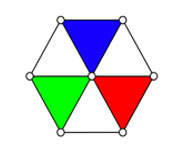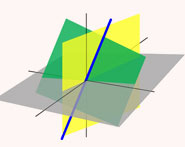


 تاريخ الرياضيات
تاريخ الرياضيات
 الرياضيات في الحضارات المختلفة
الرياضيات في الحضارات المختلفة 
 الرياضيات المتقطعة
الرياضيات المتقطعة
 الجبر
الجبر
 الهندسة
الهندسة 
 المعادلات التفاضلية و التكاملية
المعادلات التفاضلية و التكاملية 
 التحليل
التحليل
 علماء الرياضيات
علماء الرياضيات |
Read More
Date: 19-10-2015
Date: 18-10-2015
Date: 19-10-2015
|
Born: about 280 BC in Byzantium (Turkey)
Died: about 220 BC
Only a few references to Philon of Byzantium exist in the literature. He is mentioned by Vitruvius who was a Roman architect and engineer. Vitruvius (1st century BC) was the author of the famous treatise De architectura (On Architecture) and in this work he gives a list of twelve inventors of machines which include Archytas (second in the list), Archimedes (third in the list), Ctesibius (fourth in the list), and Philon of Byzantium (sixth in the list).
Heron of Alexandria mentions a work by Philon On automatic theatres which in fact forms part of his Mechanics treatise. Eutocius also mentions Philon and cites a work by him on the duplication of the cube and this material is again contained in his Mechanics treatise. Perhaps the most information about Philon's life, and this is very little indeed, comes from the only work of his which has survived (at least major parts have survived) Mechanics. In this treatise he writes about the catapult which was recently invented by Ctesibius, who we mentioned above as coming before Philon in the list of inventors given by Vitruvius. From this information we can date Philon fairly accurately and we know that he wrote his treatise Mechanics around 250 BC.
Before describing the contents of Philon's masterpiece Mechanics let us give some small details of Philon's life which can be deduced from comments which he makes in this text. Certainly Philon describes journeys he had made to Rhodes and to Alexandria to study catapults. He appears to have discussed military applications of catapults with the rulers of Alexandria. The tone here would suggest that Philon was a wealthy man of independent means able to travel in the pursuit of his studies. On the other hand it is possible that he was considered the right sort of person whose advice should be sought on military matters and he may have been earned his living advising military rulers.
What exactly was in Philon's Mechanics treatise? We know that it had nine books:
1. Introduction
2. On the lever
3. On the building of seaports
4. On catapults
5. On pneumatics
6. On automatic theatres
7. On the building of fortresses
8. On besieging and defending towns
9. On stratagems
The text of Books 4, 5, 7 and 8 has survived, while the rest has been lost. However Philon has the habit of cross referencing fully in his work so we can learn quite a bit about what was contained in the lost sections by studying the surviving ones. The style of the treatise is rather unusual since the books are composed of many short chapters. For example Book 8 consists of two sections with 75 chapters in the first section and 111 chapters in the second section.
This treatise is not just a work on what we would consider today to be applied mathematics. For example Book 8, in addition to describing ways of defending town walls from both land and sea attack, also stresses how important it is to have a good doctor available. Philon argues that those badly injured in attacks so that they cannot work again should be awarded pensions, and that the wives of those killed should be provided for.
To capture a town through a siege one must, according to Philon, make proper use of machines such as catapults and other war engines. In addition one must try to starve the inhabitants of the town, bribe suitable people to assist you, use his poison recipes to kill the inhabitants, and also use cryptography to pass secret messages. It would be interesting to have details of his proposed cryptography but unfortunately Philon's work on this topic has been lost.
One important mathematical contribution by Philon was to the problem of duplicating the cube. At first sight this seems far removed from the topics we have noted that are in his treatise. However, this is not so for Philon examines the following problem. Given a catapult, how do you make a second catapult which can fire a missile twice as heavy as the first. To do this it is necessary to construct a machine whose linear dimensions are increased exactly the amount necessary for its volume (the cube of the linear dimension) to double.
His method of duplicating the cube is similar to that due to Heron. The solution is effectively produced by the intersection of a circle and a rectangular hyperbola.
1.T L Heath, A history of Greek mathematics I, II (Oxford, 1931).



|
|
|
|
التوتر والسرطان.. علماء يحذرون من "صلة خطيرة"
|
|
|
|
|
|
|
مرآة السيارة: مدى دقة عكسها للصورة الصحيحة
|
|
|
|
|
|
|
نحو شراكة وطنية متكاملة.. الأمين العام للعتبة الحسينية يبحث مع وكيل وزارة الخارجية آفاق التعاون المؤسسي
|
|
|